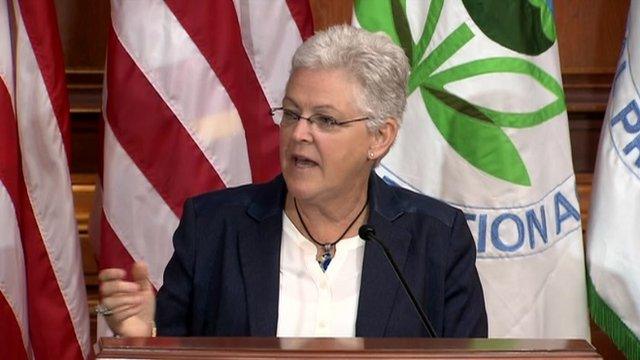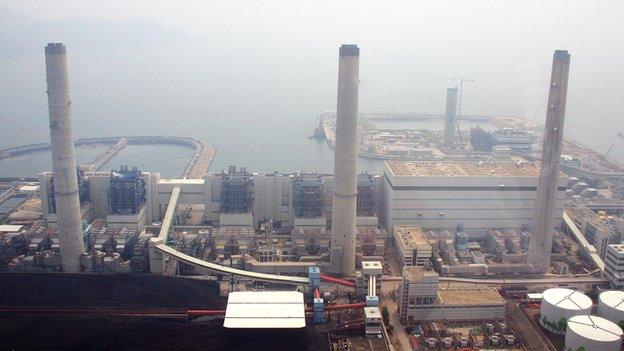Obama's clean energy plan expected to boost renewables
- Published

Over six hundred coal fired power stations across the US face restrictions under White House plans
After a year of consultations and over 4 million public comments, President Obama's Clean Power Plan will be finalised early next week.
The strategy will outline restrictions on CO2 from electricity that individual states will have to implement.
To give reluctant states more time to comply, the starting date is expected to be delayed by 2 years.
It's likely that new supports for renewable energy will also be announced.
In June last year the US Environment Protection Agency (EPA) first put forward its proposals for restrictions on power plants.
The EPA said that emissions from electricity generation need to be reduced by 30% of the 2005 level by 2030.
At that time the EPA said that individual states need to get their plans in place by 2016 and they were to become operational by 2020.
But after consultations with industry, states and 4.3 million comments from the public, the EPA is likely to extend the deadline for the start of carbon cutting until 2022.
But while some have seen the delay as a weakening of Obama's climate commitment, the White House Chief of Staff hinted that the new rules would actually make a bigger overall impact on emissions.
"There really is no overstating how big this year is for climate change," said Denis McDonough, speaking at a Washington forum earlier this week.
"We will finalise a stronger rule."
The thinking appears to be that a shorter deadline makes it more likely that states will switch from coal to natural gas, as they have been doing in recent years, external.

It's expected that there will be increased support for solar, wind and other renewable sources
A longer timeframe supports the view that energy efficiency, renewables and emissions trading between states could all play a greater role, and result in bigger carbon savings over time.
Experts believe that the delay will come with some sweeteners to encourage the take-up of renewable energy sources like wind and solar.
"The EPA have let it be known, and we all don't know what this is yet, but when they put the final Clean Power Plan out, they are also going to include more incentives for renewable energy," said Bob Perciasepe, a former deputy administrator at the EPA and now president of the Centre for Energy and Climate Solutions, a Washington think tank.
"It could make things go faster with incentives, particularly with incentives for renewables instead of just switching from coal to gas."
Lobbyists for US utilities warn that the interim goals proposed by the EPA would make electricity more expensive. Political opposition in states that produce coal, external is likely to lead to legal challenges.
Environmental campaigners believe that the courts will support the EPA changes.
They argue that because the plan is due to come in over a number of years, the courts are unlikely to grant a judicial stay that would halt the whole strategy in its tracks.
"The final rollout of the Clean Power Plan will have polluters throwing everything they can at the EPA and the White House because they know the deck is stacked against them legally," said Joanne Spalding, chief climate counsel for the Sierra Club.
"The Supreme Court has already said that Congress has charged the EPA with regulating CO2 emissions from power plants just as it regulates other air pollutants."
Green campaigners say that three times in the past eight years the court has supported the idea that the EPA has the authority and responsibility to curb carbon under the Clean Air Act.

Unions and politicians in coal states have united in opposition to the EPA plans
International observers are keenly awaiting details of the plan, to see how it might affect UN-sponsored talks on climate change, that are due to agree a new global treaty later this year.
The US has put forward a proposal to cut its overall emissions by 26-28% of their 2005 levels by 2025. The widespread acceptance and implementation of the electricity plan is vital to achieving this target.
"I expect to see quite a few governors and state air regulators welcoming the announcement, and indicating that it is quite reasonable and achievable for their states to meet," said Alden Meyer, from the Union of Concerned Scientists.
"That should help assure our international negotiating partners that the initiative is likely to survive the political challenges it will inevitably face in the coming months and years."
Follow Matt on Twitter @mattmcgrathbbc, external.
- Published27 July 2015

- Published2 June 2014

- Published30 June 2015
